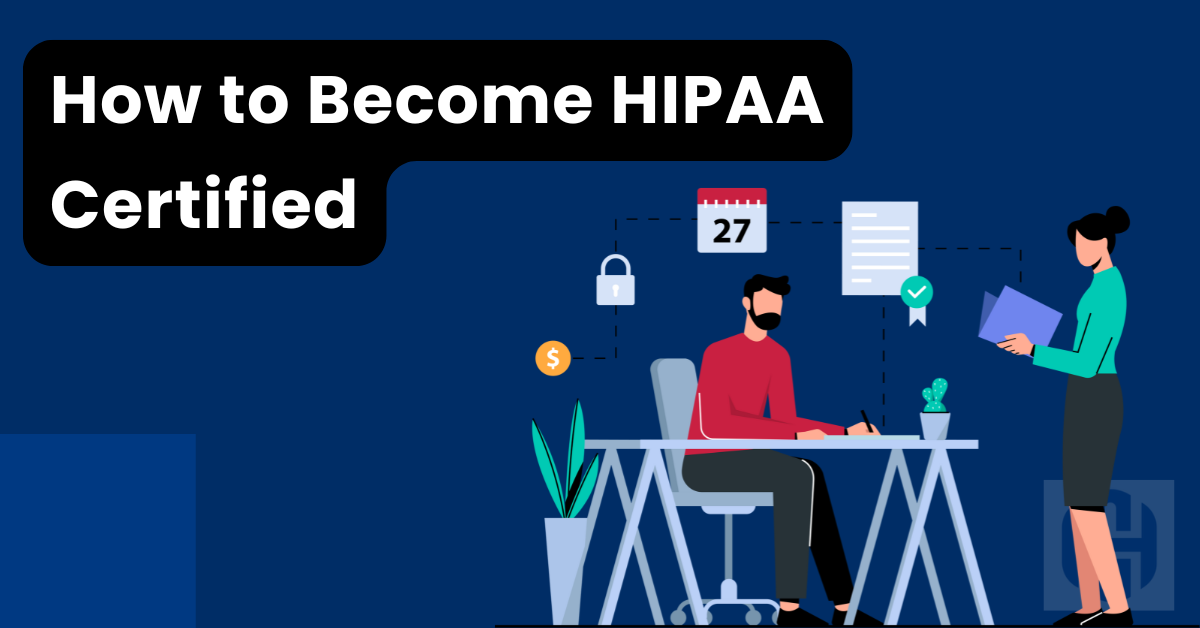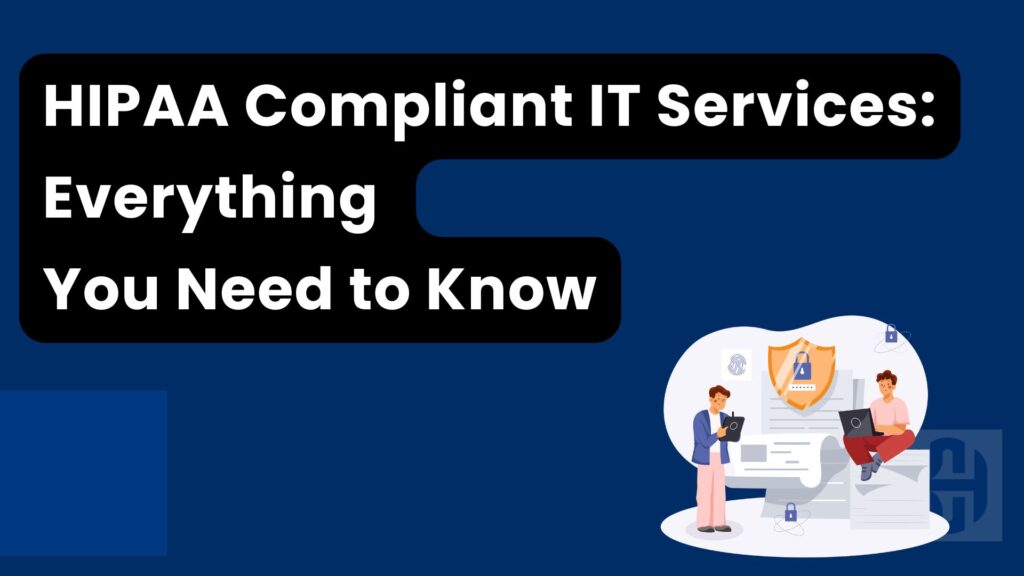Understanding HIPAA Certification
The Health Insurance Portability and Accountability Act (HIPAA) is a crucial regulation for healthcare providers, insurers, and any organizations handling protected health information (PHI). To ensure compliance and safeguard sensitive data, becoming HIPAA certified is essential. Achieving HIPAA certification demonstrates your commitment to maintaining the privacy and security of patient information. This guide will walk you through the process of becoming HIPAA certified, providing a comprehensive understanding of the requirements and steps involved.
Why is HIPAA Certification Important?
HIPAA certification is vital for several reasons:
- Legal Compliance: HIPAA certification ensures that your organization complies with federal regulations, avoiding hefty fines and legal issues.
- Patient Trust: Demonstrating HIPAA compliance builds trust with patients, reassuring them that their sensitive information is secure.
- Data Protection: HIPAA certification helps safeguard PHI, reducing the risk of data breaches and cyberattacks.
- Competitive Advantage: Being HIPAA certified sets your organization apart, showing your dedication to data security and privacy.
Why is HIPAA Certification Important?
HIPAA certification is vital for several reasons:
- Legal Compliance: HIPAA certification ensures that your organization complies with federal regulations, avoiding hefty fines and legal issues.
- Patient Trust: Demonstrating HIPAA compliance builds trust with patients, reassuring them that their sensitive information is secure.
- Data Protection: HIPAA certification helps safeguard PHI, reducing the risk of data breaches and cyberattacks.
- Competitive Advantage: Being HIPAA certified sets your organization apart, showing your dedication to data security and privacy.
Steps to Become HIPAA Certified
1. Understand HIPAA Requirements
The first step to becoming HIPAA certified is to understand the requirements. HIPAA consists of several rules, including the Privacy Rule, Security Rule, Breach Notification Rule, and Enforcement Rule. Each rule has specific standards and implementation specifications that organizations must follow.
- Privacy Rule: Establishes standards for the protection of PHI, including patients’ rights to access their information and request corrections.
- Security Rule: Sets standards for the protection of electronic PHI (ePHI), including administrative, physical, and technical safeguards.
- Breach Notification Rule: Requires covered entities to notify affected individuals, the Secretary of Health and Human Services (HHS), and, in some cases, the media of a breach of unsecured PHI.
- Enforcement Rule: Provides standards for the enforcement of all HIPAA Administrative Simplification Rules, including compliance investigations and penalties for violations.
2. Conduct a Risk Assessment
A thorough risk assessment is a critical component of HIPAA certification. This process involves identifying potential risks to the confidentiality, integrity, and availability of ePHI. The risk assessment should include:
- Identification of ePHI: Determine where ePHI is stored, received, maintained, or transmitted.
- Assessment of Potential Threats: Identify potential threats to ePHI, such as cyberattacks, natural disasters, or human error.
- Evaluation of Current Security Measures: Assess the effectiveness of current security measures and identify any gaps.
- Documentation of Findings: Document the findings of the risk assessment, including identified risks and recommended mitigation strategies.
3. Implement HIPAA Policies and Procedures
To achieve HIPAA certification, organizations must implement comprehensive policies and procedures that address HIPAA requirements. These should cover:
- Privacy Policies: Policies that outline how your organization protects the privacy of PHI and ensures patient rights.
- Security Policies: Policies that specify the administrative, physical, and technical safeguards in place to protect ePHI.
- Breach Notification Procedures: Procedures for responding to data breaches, including notification timelines and reporting requirements.
- Training and Awareness Programs: Ongoing training programs for employees to ensure they understand HIPAA requirements and their role in maintaining compliance.
4. Designate a HIPAA Compliance Officer
Appointing a HIPAA Compliance Officer is crucial for ensuring ongoing compliance. The Compliance Officer is responsible for:
- Overseeing HIPAA Compliance: Ensuring that all aspects of the organization’s HIPAA compliance program are implemented and maintained.
- Conducting Regular Audits: Performing regular audits to assess compliance with HIPAA policies and procedures.
- Training Employees: Providing ongoing training to employees on HIPAA requirements and best practices.
- Handling Breaches: Managing the response to any data breaches, including investigation, notification, and mitigation.
5. Conduct HIPAA Training
Regular training is essential for ensuring that all employees understand their responsibilities under HIPAA. Training programs should cover:
- HIPAA Basics: An overview of HIPAA regulations and their importance.
- Privacy and Security Rules: Detailed training on the Privacy and Security Rules, including specific policies and procedures.
- Breach Response: Training on how to recognize and respond to potential data breaches.
- Ongoing Updates: Regular updates to keep employees informed of any changes to HIPAA regulations or internal policies.
6. Perform Regular Audits and Monitoring
Ongoing monitoring and regular audits are critical for maintaining HIPAA compliance. This includes:
- Internal Audits: Regular internal audits to assess compliance with HIPAA policies and procedures.
- External Audits: Engaging third-party auditors to conduct comprehensive assessments of your HIPAA compliance program.
- Continuous Monitoring: Implementing continuous monitoring tools to detect potential security incidents and ensure ongoing compliance.
7. Corrective Actions and Improvement
Based on the findings from audits and risk assessments, organizations should implement corrective actions to address any identified gaps or weaknesses. This includes:
- Remediation Plans: Developing and implementing remediation plans to address identified risks and vulnerabilities.
- Policy Updates: Regularly updating policies and procedures to reflect changes in regulations or business practices.
- Ongoing Training: Providing additional training to employees as needed to address any identified gaps in knowledge or understanding.
8. Obtain HIPAA Certification
While there is no official HIPAA certification from the federal government, organizations can seek certification from third-party organizations that specialize in HIPAA compliance. These certifications provide an additional layer of assurance that your organization complies with HIPAA requirements. To obtain third-party HIPAA certification, organizations typically need to:
- Undergo a Comprehensive Assessment: Participate in a thorough assessment conducted by the certifying body.
- Demonstrate Compliance: Provide evidence of compliance with all relevant HIPAA requirements.
- Receive Certification: Upon successful completion of the assessment, receive certification from the third-party organization.
Maintaining HIPAA Certification
Achieving HIPAA certification is not a one-time effort. Organizations must maintain compliance through ongoing efforts, including:
- Regular Training: Continuously training employees on HIPAA requirements and best practices.
- Ongoing Audits: Conducting regular internal and external audits to assess compliance.
- Policy Updates: Regularly updating policies and procedures to reflect changes in regulations or business practices.
- Continuous Monitoring: Implementing continuous monitoring tools to detect potential security incidents and ensure ongoing compliance.
Challenges in Achieving HIPAA Certification
Becoming HIPAA certified can be challenging, and organizations may face several obstacles, including:
- Complex Regulations: Understanding and implementing the complex requirements of HIPAA can be daunting.
- Resource Constraints: Smaller organizations may struggle with the resources required for compliance, including time, money, and expertise.
- Evolving Threat Landscape: The constantly changing threat landscape requires organizations to stay vigilant and continuously update their security measures.
- Employee Awareness: Ensuring that all employees understand their responsibilities under HIPAA and adhere to policies and procedures can be challenging.
Benefits of HIPAA Certification
Despite the challenges, the benefits of achieving HIPAA certification are significant:
- Legal Protection: Reducing the risk of legal issues and fines associated with non-compliance.
- Enhanced Security: Improving the overall security posture of your organization and protecting sensitive data.
- Patient Trust: Building trust with patients and demonstrating your commitment to protecting their information.
- Competitive Advantage: Differentiating your organization in the marketplace by showcasing your dedication to HIPAA compliance.
Conclusion
Becoming HIPAA certified is a critical step for any organization handling protected health information. By understanding the requirements, conducting thorough risk assessments, implementing comprehensive policies and procedures, and maintaining ongoing compliance efforts, your organization can achieve and maintain HIPAA certification. This commitment to protecting patient information not only ensures legal compliance but also builds trust with patients and provides a competitive advantage in the healthcare industry.
Ready to become HIPAA certified? Partner with HIPAA Certify to ensure your organization meets all HIPAA requirements and safeguards patient information. Our comprehensive services include risk assessments, policy development, employee training, and ongoing support to help you achieve and maintain HIPAA certification. Contact HIPAA Certify today to start your journey towards HIPAA compliance and secure your organization’s future. Visit HIPAA Certify for more information.





